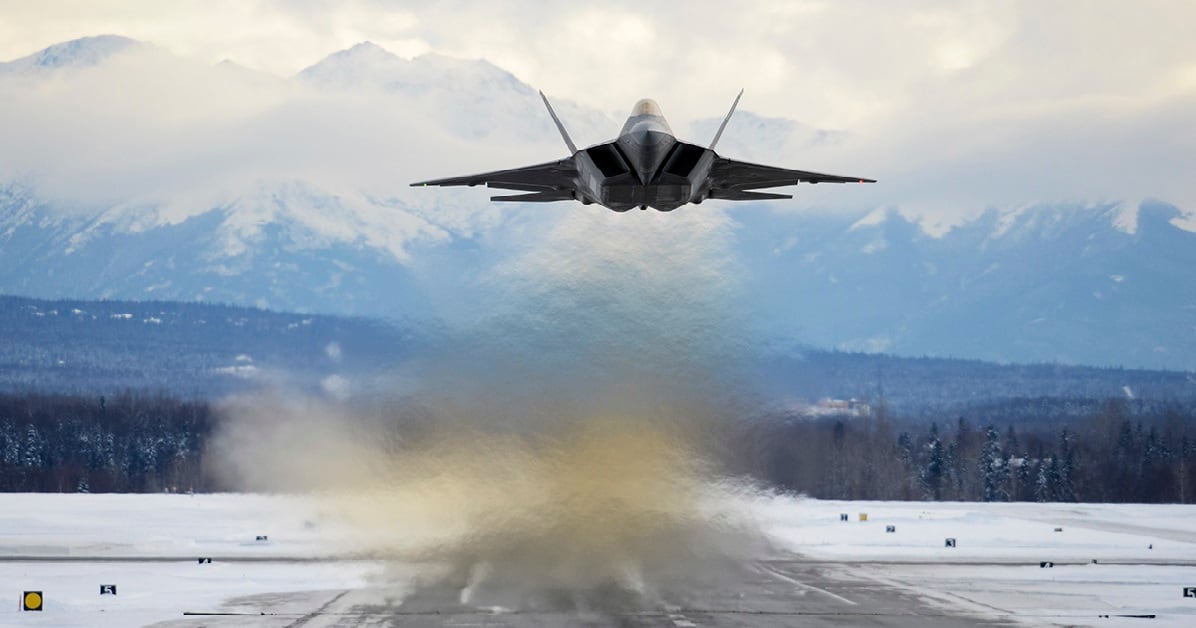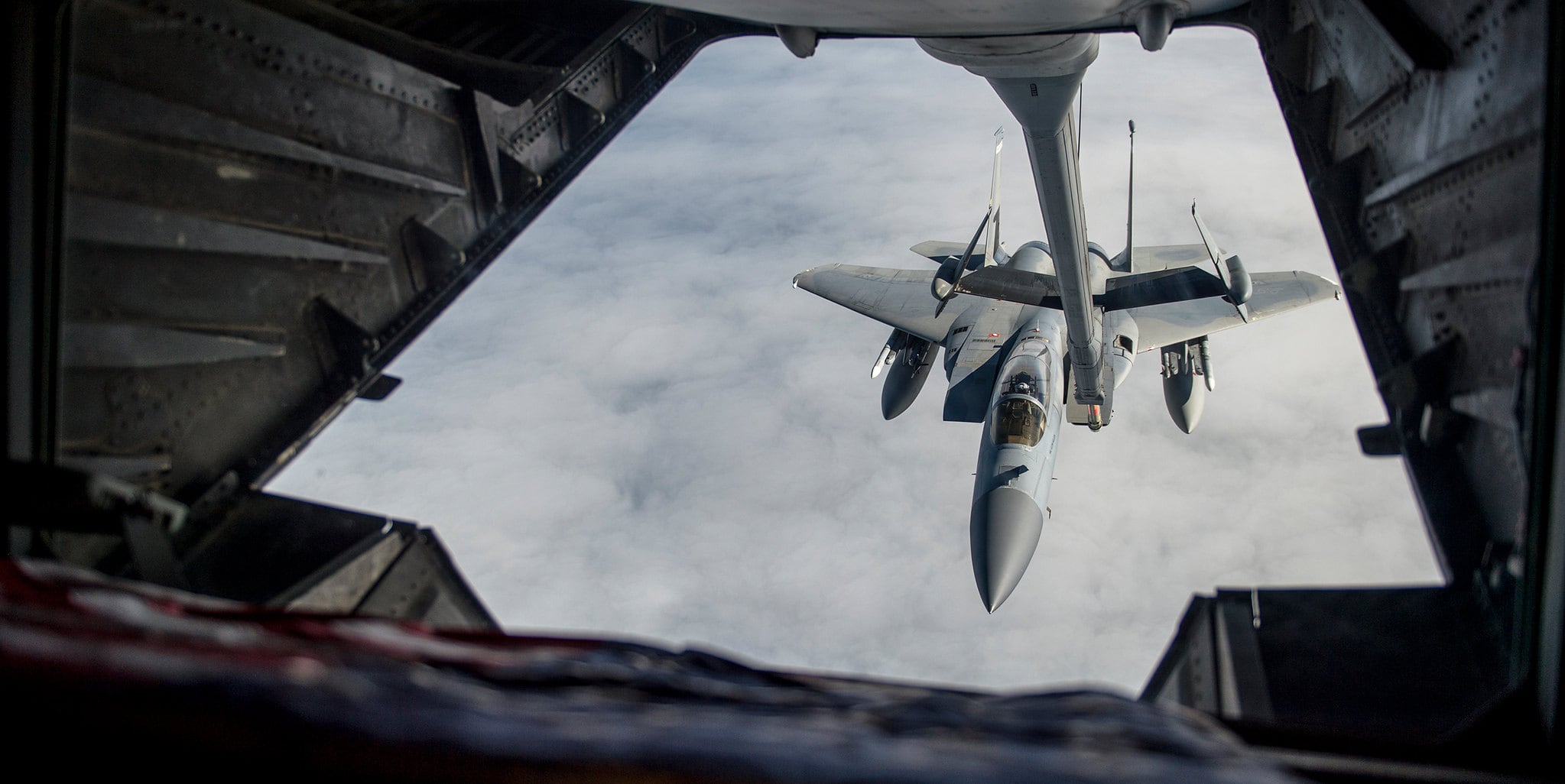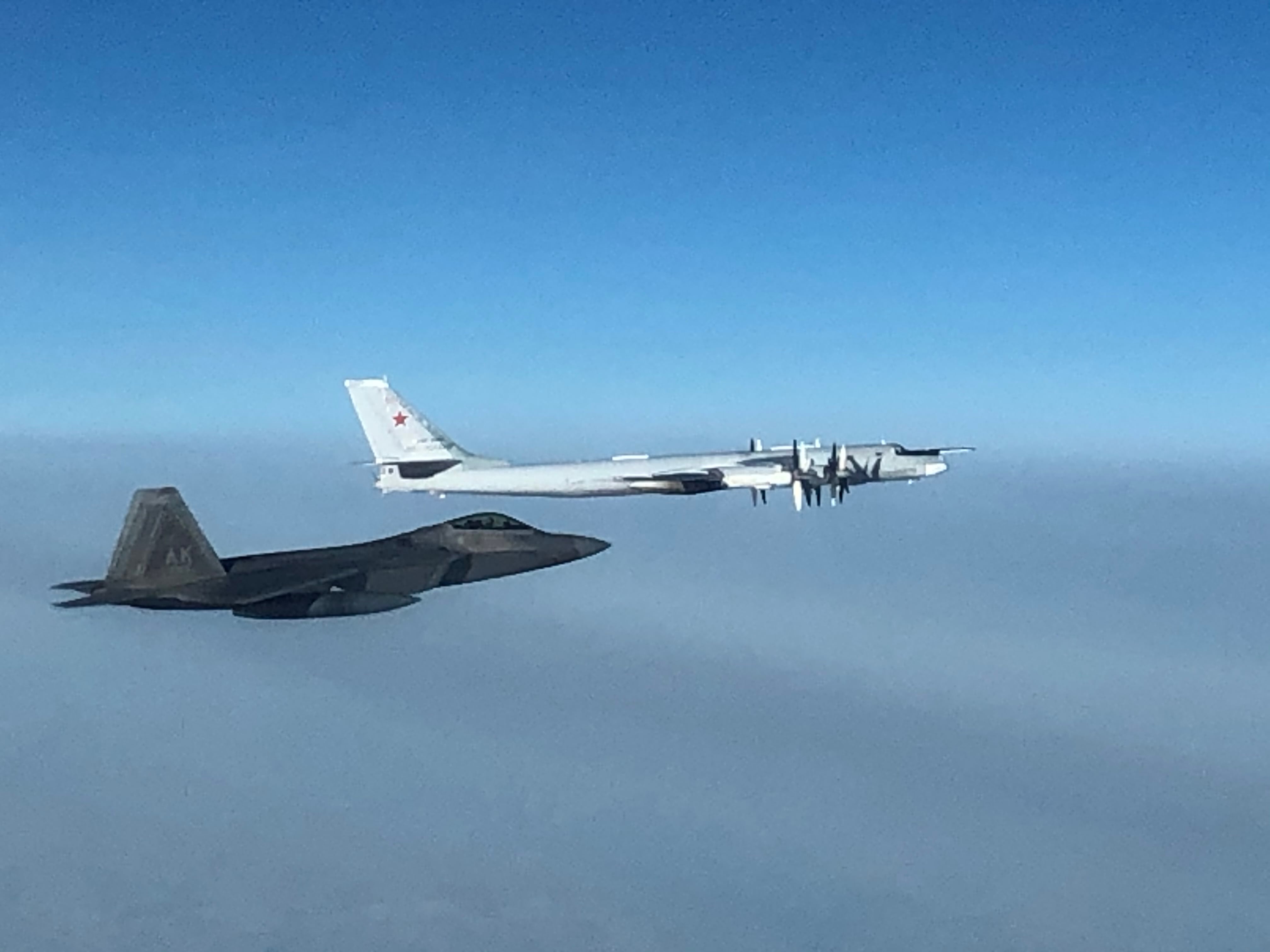Intercepting record numbers of Russian aircraft off of North America’s west coast has stretched Air Force units thin, a top service official in Alaska said Wednesday.
“We have certainly seen an increase in Russian activity. We intercepted over 60 aircraft last year. … We monitor more than that,” Lt. Gen. David Krumm said from Joint Base Elmendorf-Richardson, Alaska, during an online forum hosted by the Air Force Association.
That’s the most action the Alaska Air Defense Identification Zone — a region spanning 200 nautical miles that reaches past U.S. territory and into international airspace — has seen since the Soviet Union fell in 1991. In comparison, the Anchorage Daily News reported in 2015 that the ADIZ averaged about 10 incursions by Russian aircraft each year, like Tu-95 Bear bombers, anti-submarine aircraft, and intelligence-collection planes.
In response, the Air Force deploys F-22 fighter jets, E-3 airborne surveillance planes and KC-135 tankers to escort Russian aircraft away. The flights come as world powers jockey for influence in the Arctic, a growing hotspot of domestic and military activity.
“While there is a strain on our units, I will tell you that they’re managing it very, very effectively,” said Krumm, who serves as head of U.S. Northern Command’s Alaska branch, NORAD’s Alaskan region, and the 11th Air Force under Pacific Air Forces.
RELATED

The military sends F-22s from JBER to meet up with the Russians because the Raptors are based nearby in Alaska, but Krumm indicated the Air Force may be open to dispatching other types of jets in the future so Raptors can focus on more complex missions and training. The F-16 Fighting Falcons at nearby Eielson AFB, Alaska, could offer a fourth-generation jet alternative.
“F-22s are our frontline air superiority fighter,” he said. “There is a cost. … I don’t know all the options that we’re going to pursue yet.”
NORTHCOM and NORAD boss Gen. Glen VanHerck warned House lawmakers on April 14 that the U.S. must be able to detect and respond to all potential airborne threats as Russia improves its bomber fleets and other long-range aircraft. The Defense Department is considering its options for modernizing a network of satellites, radars and other sensors and assets that would help the military pick up on suspicious behavior sooner and to collaborate across the force to address it.
Aspects of that network will be tested at the upcoming Northern Edge exercise that begins May 3, including technologies like the new F-15EX Eagle II fighter jet, SpaceX’s Starlink internet satellites, inventions from the Air Force Rapid Capabilities Office, and electronic signal jammers.
RELATED

The spike in intercepts could factor into the scenario that participants face at Northern Edge, Air Force Times previously reported.
“We are looking at what modern warfare could be in the future, and that includes scenarios like [Russian incursion into American airspace],” Lt. Col. Michael Boyer, the lead planner for Northern Edge, told reporters March 31. “Obviously, we see a lot of interest and value in our nation’s interest in the Arctic and we want to make sure that those are protected and preserved in an appropriate manner.”
Rachel Cohen is the editor of Air Force Times. She joined the publication as its senior reporter in March 2021. Her work has appeared in the Washington Post, the Frederick News-Post (Md.), Air and Space Forces Magazine, Inside Defense, Inside Health Policy and elsewhere.





